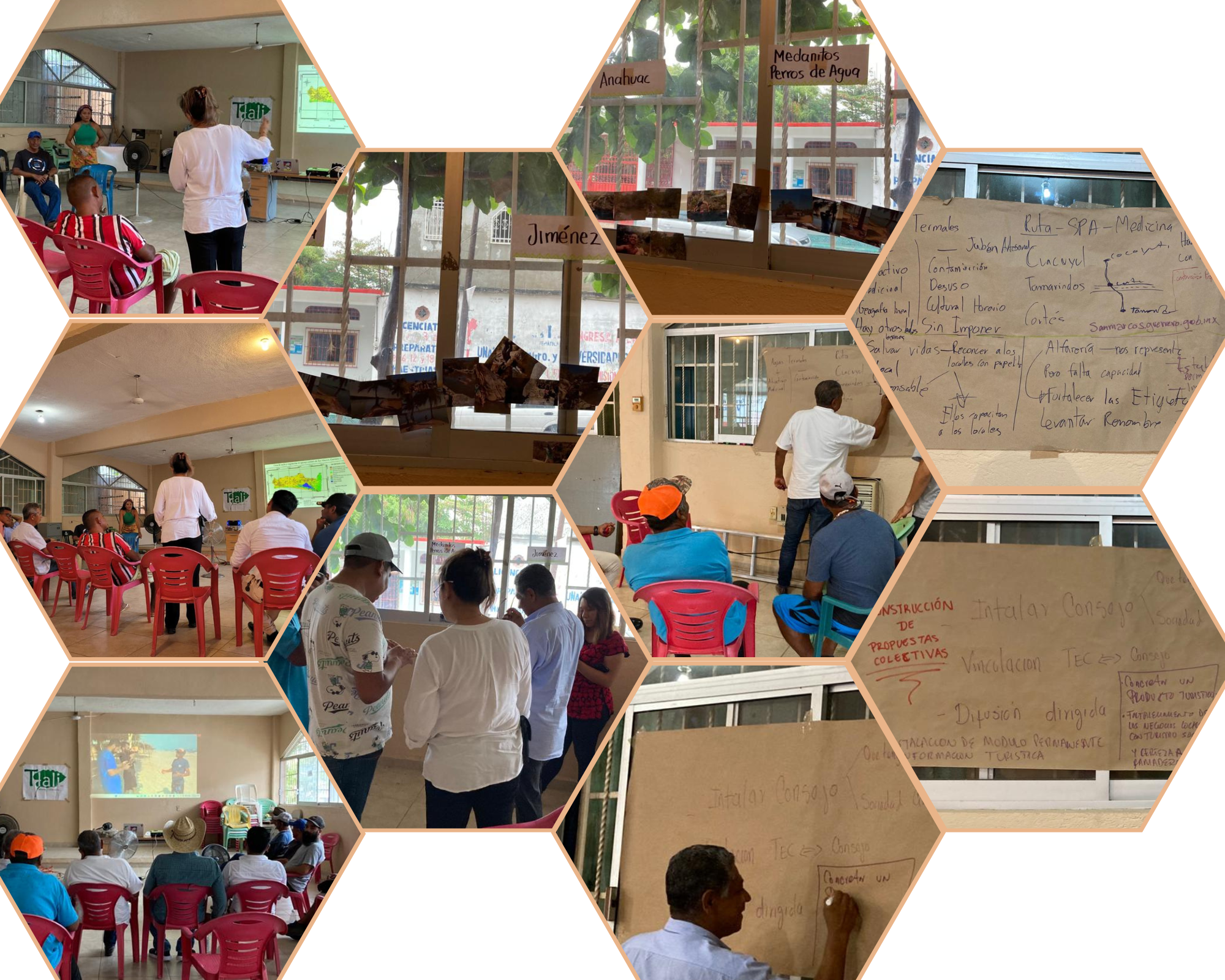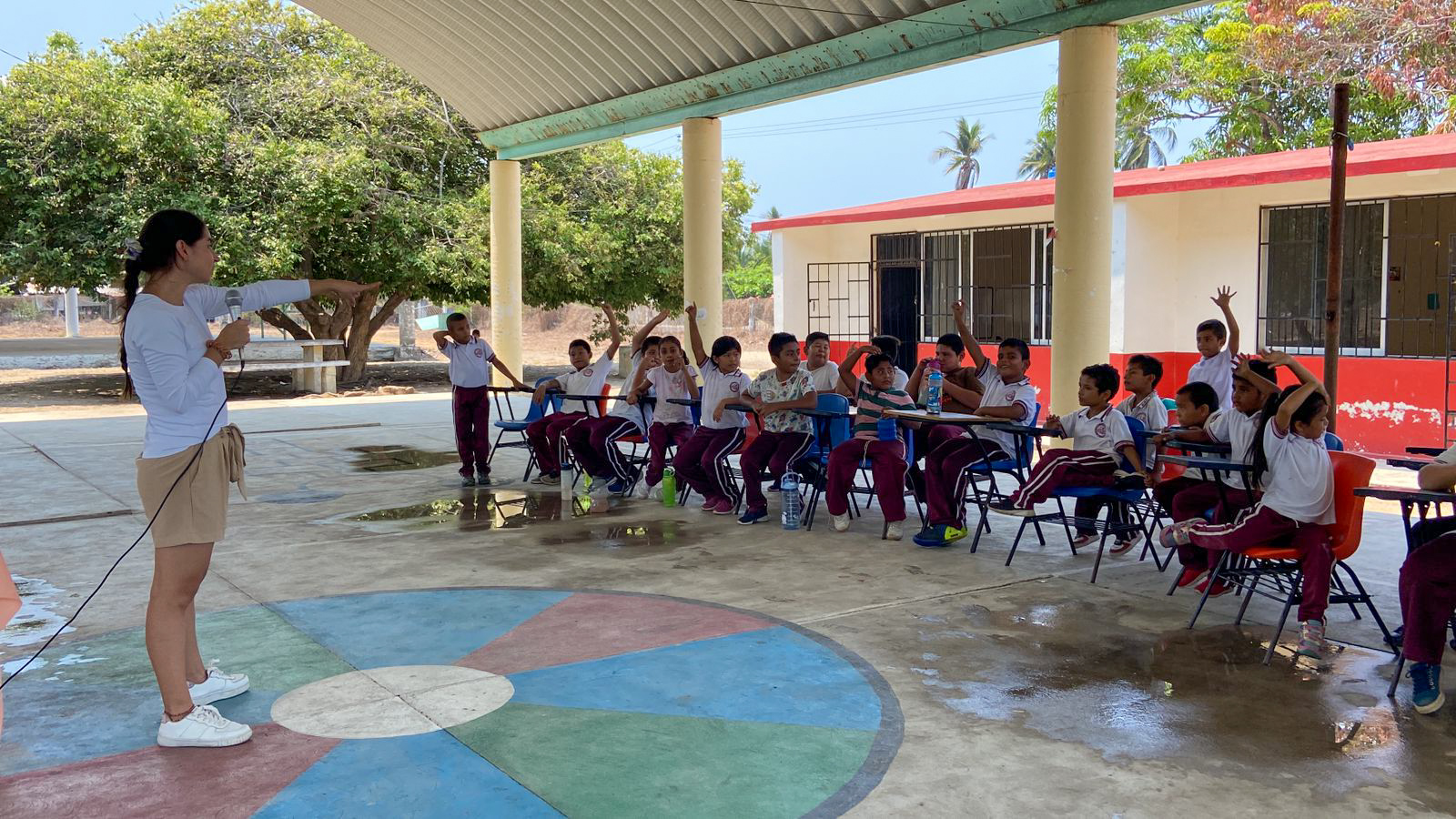by liliana leyva diaz
the objective of my research and advocacy project is to design strategies for neighbourhood improvement in the fraccionamiento real del palmar using a participatory and sustainable approach, involving the community in the whole process.
i structured this project in three stages. in the first blog i presented the first stage of pre-diagnosis, structured around three levels of reading: macro (municipality), meso (cayaco-llano largo sector) and micro (subdivision) [previous blog link]; and sustained by a process of involvement with the community of inhabitants of the subdivision through workshops with children.
in this second installment I share the two remaining stages of the project, where in the diagnosis stage the issues of possible improvement that emerged from the pre-diagnosis stage will be specified, this in order to select the outstanding problems to be solved; subsequently, through the planning stage a series of strategies will be designed for the possible solution of the previously selected problems.
from pre-diagnosis to diagnosis
the pre-diagnosis allowed us to have a panoramic view of the subdivision and its problems, however, we needed a more precise understanding of the problems presented by real del palmar. in this sense, the diagnosis stage included a series of semi-structured interviews with 20 inhabitants as part of a collective analysis of the current situation of the subdivision. the interviews were structured in five relevant topics for the diagnosis: trajectory, public services and equipment, use of housing, risks and coexistence.
We considered it important that the first part of the interviews was the trajectory of the inhabitants, in order to know the history of how they came to live in the subdivision and how many years they have been living there, and, above all, to analyse what were the main reasons and interests for choosing to live in the subdivision.
as a result, we obtained that most of the people have been living in the subdivision for more than 5 years, so we can assume that they are adapted and stable people within the subdivision. in the same way, we found out that the main reason for living in the subdivision is to acquire a patrimony, in this case a home through one of the most feasible means such as the infonavit credit; Likewise, another small part of the people chose their home because of its location and proximity to their jobs, so not all the inhabitants feel excluded from the city or far from their work, school or recreation centres as they had thought at the beginning of the research.
We then began to talk about basic services and equipment, with the aim of finding out what they thought about the efficiency of drinking water, street lighting, rubbish collection, drainage and green areas. The results showed that, of the basic services, public lighting is the one that stands out most as an inefficient service, as people argue that it is not an efficient and constant service and that most of the time the streets are completely dark, which has led to insecurity, generating a scenario that encourages assaults, road accidents and the confinement of residents at certain times. Another of the services that was highlighted by the inhabitants was the sanitary drainage service, as they all agreed that at the main entrance to the development there are small stagnations, it smells bad and when it rains it floods, which makes access more difficult for all the inhabitants. in terms of green areas, the inhabitants suggest that they need maintenance and above all respect the areas designated as green areas, as many people damage and dry out the gardens by putting their businesses all along the main avenue, and as a result, there is nothing left of these green areas.
On the other hand, on the subject of how the inhabitants use their homes, we found out how the families living in the area use their homes, In this case, most of the people live in their homes normally, and some of the inhabitants use their homes to generate income by trading inside their homes or in front of them. Similarly, there are people who rent their homes during holiday seasons, as a convenience to generate extra income with the support of social networks and accommodation platforms such as airbnb, leaving their homes during those seasons and going to live in their relatives’ homes. however, there is a small part of the population that only acquires homes and rent them all year round.
In the analysis of the use of housing, I also found out what their most common ways of coexisting with other neighbours or simply integrating into their subdivision were. as a result, coexistence between neighbours is lacking and their most common way of meeting is to go for a walk and play with the children of the same condominium or nearby houses.
From this diagnosis, it was interesting to know the different points of view of each person and how they broke with some assumptions that they had at the beginning of the research; for example, for many inhabitants, acquiring a home as a patrimony or life objective is of great value, and even more, if it is close to their work and educational centres. Another relevant part was the issue of risks, since most of the inhabitants did not consider the subdivision as a risk area, although many of them are aware that it is located on lagoon and flood soils, however, it is well known that in rainy seasons the main access to the subdivision passes through one of the avenues that are characterised as one of the most flood-prone areas of the city.
as a second activity in the diagnostic part of the project, we continued to analyse in depth the relevant issues through a participatory workshop held with some of the inhabitants of the subdivision. the objective of this workshop was to present the results obtained in the previous interventions and subsequently analyse the causes and consequences of the present problems.
Therefore, in a participatory manner, the problems that emerged from the previous stage were analysed and specified and new ones were proposed. once the list of problems to be dealt with was completed, we managed to classify the problems into two groups, the first of “public services and equipment” which includes the shared spaces, the environment and the basic services that are part of the development. on the other hand, the “social” group includes the problems that are the responsibility of society, local actors, public, government, service providers and the inhabitants of the development.
in the first group (public services and equipment) we include the problems of public lighting, collective spaces, maintenance and costly services. the most relevant causes of this group were: lack of neighbourhood organisation, lack of constant maintenance of public lighting and green areas, which has generated consequences such as insecurity, poor image, inefficient services and housing abandonment.
On the other hand, the second group (social) is made up of the following problems: deterioration of the space, lack of social interest and road education, where the main causes were the lack of participation of the inhabitants, non-compliance with the regulations, lack of interest and lack of appropriation of the space, which in turn has led to consequences such as neighbourhood dissatisfaction, lack of harmony and neighbourhood coexistence.
from diagnosis to planning
once we had analysed the main problems, causes and consequences present in the subdivision, we prioritised the problems through a participatory planning workshop with the inhabitants of the subdivision. it is important to highlight that the participation and integration of the inhabitants in this process is considered transformative, as they go from being an object of study to being subjects of the study and beneficiaries of the findings. subsequently, together with the workshop participants, we listed, according to the scope and opportunities that we currently have at hand, the problems that we could begin to take action on, which were: 1) lack of social interest, 2) collective spaces and maintenance, and 3) public lighting.
In the first issue of lack of social interest, we proposed to encourage and carry out dynamic participatory activities, such as zumba, aerobics and / or massive rolling, as well as to encourage the participation of local residents and foreign residents (who temporarily visit their properties and / or rent them) providing their interests, complaints and suggestions for the common good of the subdivision through a mailbox.
On the second issue of collective spaces and maintenance, we proposed to carry out periodic conservation and cleaning brigades within the development, to manage resources for painting and equipping the new primary school and the multi-purpose court, to carry out an environmental awareness and preservation activity, to include waste bins in the main streets of the development, Finally, we proposed to establish a fixed fee that is accessible to the inhabitants per condominium to be able to carry out the proposed actions, and therefore, an agreement was reached where, due to time constraints of the inhabitants, whether for work or other activities, it is convenient to pay for the services of workers destined for these actions.
Finally, regarding the problem of the public lighting service, we proposed holding a meeting to present the proposal and analyse together the consequences of the inefficiency of this service before the administrative committee in order to subsequently reach an agreement and resolve the problem.
challenges of participatory processes
I must admit that the leap from the pre-diagnosis stage to the diagnosis generated doubts in terms of the interest and participation of the inhabitants in the project, however, from the process of linking up with the committee, the project had the support of everyone and aroused the interest of the inhabitants, since, as they commented at the time, a project of this type had never been carried out that would integrate the community with recreational activities and at the same time generate a space for discussion of the current conditions.
On the other hand, participation in the pre-diagnosis stage was quite good; however, in the diagnosis and planning stage, the number of participants dropped, as it was considered that the weekdays and timetables were not appropriate, as they were weekdays and during working hours for most of the inhabitants; Therefore, although we did not have the number we would have liked to have, the diagnosis and planning process has been truly fruitful, fulfilling one of our objectives, in which we managed to generate a group of inhabitants with common interests, capable of discussing, analysing and planning strategies to improve the space and the environment.





